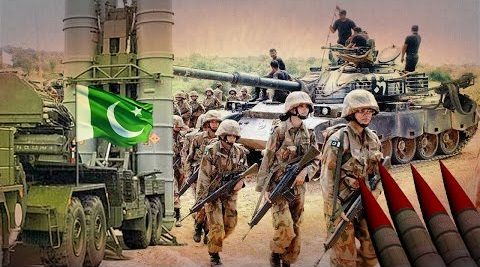For More Videos & News Subscribe Our YouTube Channel & Stay Update!
Pakistan Military Power - Trailer 2016
How Powerful is Pakistan Military:
How strong is Pakistan?
Pakistan have upto 180+ War-Head According to an report,
Pakistan is 4th biggest Nuclear making Country,
Russian President once said "If he had Pakistan army and Russian weapons, he could conquer the world",
Pakistan army wins gold medal and promoted to best army while Exercise Cambrian Patrol,
Pakistan defeat India in 1947 without weapons,
Pakistan Air Force (MM Alim) Pilot have shoot down 5 Indian Fighter Jets in 30 seconds and make world record in 1965 war,
Pakistan army have defeat 3 time bigger enemy many times,
Pakistan is first country who trained female fighter pilots,
Pakistan Air Defense is far better from India & South Africa,
Pakistan all War-Heads (Nuclear & Atom Bombs) made in Pakistan.
War History:
The Indian forces intruded into Pakistani area in the Rann of Kutch in April 1965. In a sharp and short conflict, the Indian forces were ejected. Both the armies had fully mobilized, with eyeball to eyeball contact. Pakistan proposed cease-fire, India accepted. An agreement was signed: the forces disengaged. The Award by the Arbitration Tribunal vindicated Pakistan 's Position. Past midnight on 5/6 September, without a formal declaration of war, Indian Army crossed the international border and attacked Lahore and Kasur fronts. Pakistan Army and Pakistan Air Force halted the attack in its tracks, inflicting heavy casualties on the aggressor. On 7 September a single Pakistan Air Force Pilot, Squadron Leader M.M. Alam, Sitara-i-Juraat, in his F-86 Sabre shot down five Indian Air Force attacking Hunter aircraft in a single sortie, an unbeaten world record “On night 6/7 September three teams of our Special Services Groups were para-dropped on Indian Air Force bases at Pathankot, Adampur and Halwara to neutralize them. To relieve pressure on Lahore front, on night 7/8 September, after crossing two major water obstacles in a bold thrust, Pakistani armoured and mechanized formations supported by artillery and Pakistan Air Force overran area Khem Karn, 6 to 8 miles inside Indian territory. Vital Indian positions at Sulemanki and across Rajasthan and Sindh were also captured in bold, swift attacks. On night 7/8 September, 1 Corps of Indian Army launched its main effort east of Sialkot with one armoured and three infantry divisions on our extended 15 Division front, screened only by gallant 3 Frontier Force and B Company 13 Frontier Force (Reconnaissance & Support). 24 Infantry Brigade (Brigadier A.A Malik, Hilal-i-Juraat) on the move in area Pasrur, rushed 25 Cavalry (Lieutenant Colonel Nisar Ahmad, Sitara-i-Juraat), on 8 September to delay and disrupt enemy thrusts. As soon as the presence of Indian 1 Armoured Division was confirmed, Pakistan Army rushed forward to stop the onslaught on a 30-mile front. The biggest tank battle since World War II was fought on the Chwinda front by 6 Armoured Division with under command 24 Infantry Brigade Groups and valiantly supported by 4 Corps Artillery (Brigadier A.A.K. Choudhry, Hilal-i-Juraat). The main effort of the Indian Army was blunted, inflicting heavy and troop casualties. Pakistan Air Force support helped turn the tide of the battle. Before a counter offensive by 6 Armoured Division on 22 September could be launched, Indian asked for cease-fire in the United Nations. India 's aggression against our international borders without a formal declaration of war had cost it, apart from heavy personnel, material land economic losses, 1617 sq. miles of territory as compared to 446 sq. miles of our open and undefended territory. Pakistan Army captured 20 officers, 19 Junior Commissioned Officers, and 569 Other Ranks.




